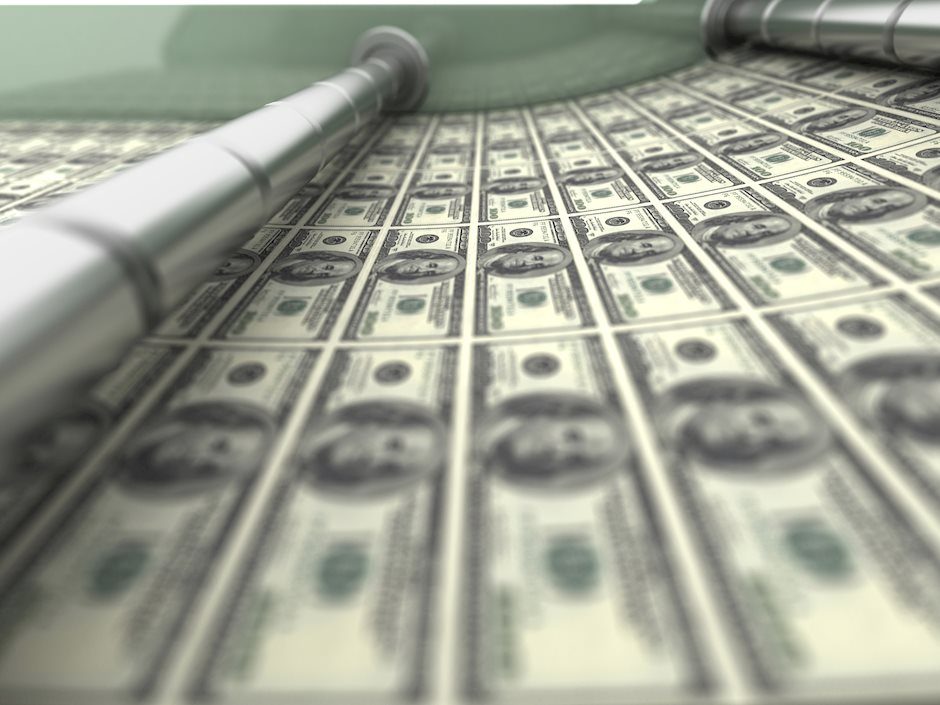De-dollarization is not just a wild conspiracy theory

What is driving the recent gold rally?
As with any bull run, there are many factors -- hope that the Federal Reserve is about to get the easy money gravy train back on the track chief among them. However, I have speculated that one of the underlying reasons for the recent rise in the price of gold is de-dollarization driven by the weaponization of the dollar.
You might find this idea far-fetched, but it isn't as "fringe" as you might think.
One thing is certain: somebody is buying gold right now.
The yellow metal set a record of just over $2,195 per ounce last week, and records aren’t just falling in dollar terms. Gold made 50-year highs versus three-quarters of major developed and emerging market currencies last week.
I don’t think it’s a coincidence that gold prices started breaking records not long after U.S. Treasury Secretary Janet Yellen turned heads by brazenly calling for liquidating frozen Russian assets totaling around $300 billion and using the proceeds to help rebuild war-torn Ukraine.
Economist Jim Rickards floated a similar belief in a post on X saying he has “no doubt” that one of the main drivers for the gold rally is this push to “steal” from Russia. And he picked up on the broader implications, saying, “Once Treasuries are unsafe, Euro and Yen notes don't look any better. Countries are going for gold.”
This isn’t mere speculation. Central bank gold buying has been on a record pace for more than two years.
Of course, it's not unreasonable to conclude that using the dollar as a foreign policy hammer could make countries wary of holding dollars. Still, you might think this a far-fetched theory held by contrarians and conspiracy theorists. Nevertheless, similar thoughts have occurred to people more in the “mainstream.”
Bloomberg macro strategist Simon White recently published an article noting that central banks are accumulating gold “in an effort to diversify away from the dollar.
White notes two reasons central banks are abandoning dollars for gold.
First, despite the Federal Reserve’s efforts, inflation isn’t beat. White points out that “persistently large fiscal deficits threaten to further erode its real value and lead to more inflation.”
“Central banks everywhere are quite possibly uneasy about owning too many dollars when the US is running large, inflation-causing fiscal deficits. The dollar is structurally overvalued on a purchasing-power-parity basis versus the main DM currencies.”
White says the trend is toward “dollar underperformance” in the coming years.
Second, countries, particularly those on less friendly terms with the U.S., are watching how the U.S. handles Russian assets, and it’s making them nervous. White called the worry about the weaponization of the dollars the “dominant reason” central banks are turning to gold.
“Central banks want gold as it is a hard asset, not part of the financialized system when owned outright. But the dominant reason is a desire to diversify away from the dollar. If you’re not on friendly terms with the U.S., then it is a way to avoid your reserve assets being seized, as happened to Russia.”
White notes that central banks are buying gold even as institutional investors continue to spurn the yellow metal with ETF gold holding dropping.
He points out that “the bulk of seasonal buying, for instance, Diwali in India, is likely behind us.” He also noted that while silver has also rallied, it is nowhere near record levels.
“It’s, therefore, a reasonable supposition the official sector, i.e. central banks, has been a significant driver of gold’s recent ascent to new highs.”
And he points out that “in the runup to the pandemic, and again in the aftermath of Russia’s invasion of Ukraine, global central banks have continued to add to their gold holdings even as ETF investors (perhaps dazzled by the bright lights of crypto) have reduced theirs.”
It’s time for investors to take note. After all, you and I face the same risk from the dollar as foreign countries. The only way to stop the declining purchasing power of the dollar from stealing your wealth is to not hold dollars.
To receive free commentary and analysis on the gold and silver markets, click here to be added to the Money Metals news service.
Author

Mike Maharrey
Money Metals Exchange
Mike Maharrey is a journalist and market analyst for MoneyMetals.com with over a decade of experience in precious metals. He holds a BS in accounting from the University of Kentucky and a BA in journalism from the University of South Florida.


















